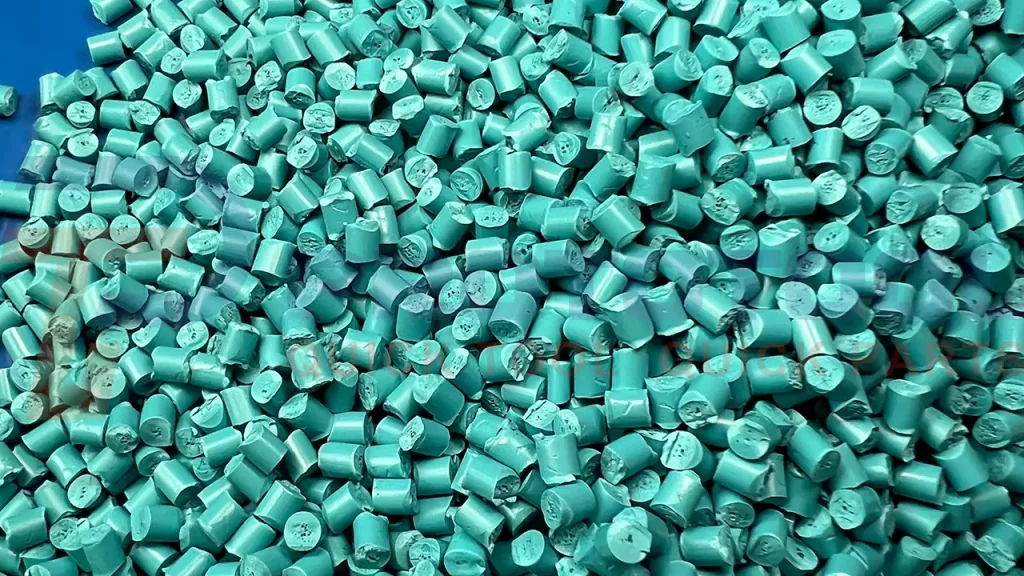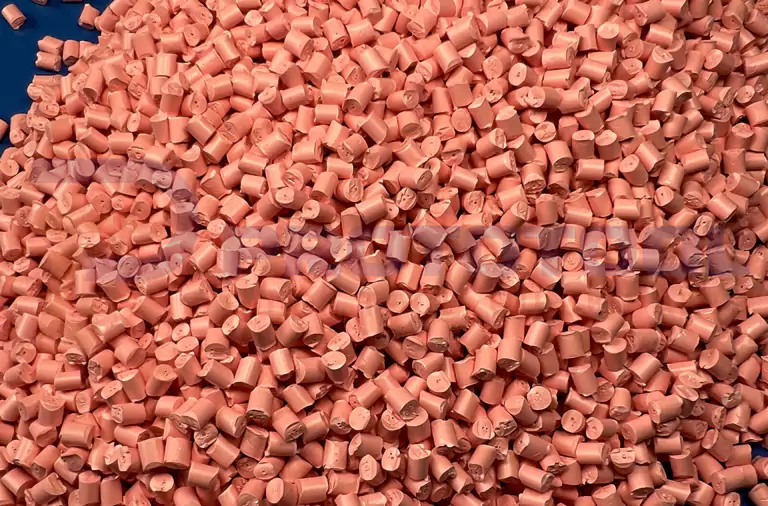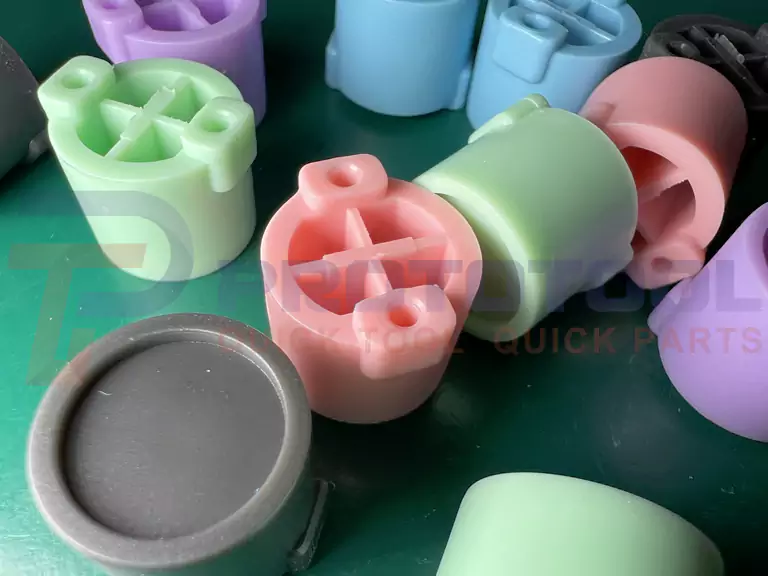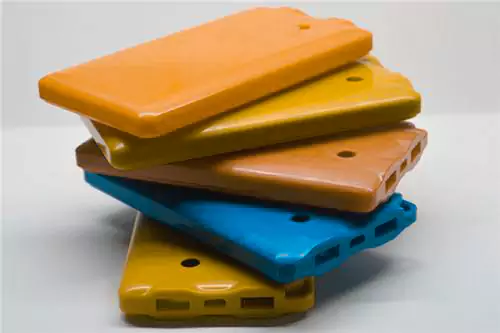In general, chromatic aberration is a prevalent fault in plastic injection molding. And it is found in the injection molding process. But that’s not all the defects that may occur in such parts related to their color differences. As we all know, several factors influence the color difference of finished injection molded parts. It’s no surprise that it’s one of injection molding’s most difficult-to-control technologies. Professional service providers, such as Prototool, understand the types of errors and how to avoid them to supply customers with high-quality injection molded parts. Please continue reading to learn how such businesses do it.

How Are Colors Mixed in Injection Molded Parts?
· Compounding
In this case, several different hues have been pre-mixed with a component called resin. Different pigments can be manufactured for blending with resin, giving you a greater range of color options. In this method, pre-mixed or “compounded” colors are ready for injecting phase. This is something that many molding companies can rely on and benefit from.
· Masterbatching:
Another approach, known as “masterbatched,” involves mixing several different colors and resins. The main difference between this and compounding is that masterbatch colors are still being prepared to be injected as they are. In actuality, the pigment-to-resin ratio in this technique is approximately 50-50, so the pigment must be injected with clear plastic or rubber to reach a ratio of at least 2% by volume.
Because many masterbatched colors are created one ton at a time, which can positively affect the workflow of various molding companies, masterbatched colors are helpful despite their alleged limitations. Using many colors and pigments simultaneously, especially when blended correctly, assures that manufacturing and distribution will always stay on time.

· Coloring with Solvents Injection Molding:
This is one of the techniques that make this approach of color mixing the most straightforward. Spray uncolored pellets with solvent to prevent challenges or discrepancies during service. Furthermore, it assures that the pellets injected for molding are durable and dependable enough to withstand the process.
The one item that can be difficult to regulate is the pigment-to-plastic ratio, which, similar to the preceding remark about color-mixing in injection molding, should maintain a 50-50 ratio, or, in the best case scenario, 2% by volume. Examining the ratio can be difficult because it requires examining the pigment-to-plastic ratio. When the ratio is satisfactory, the injection process can begin.
· Dry Pigment Blending:
In the third procedure, the dry pigment powder is blended directly with plastic pellets in the ‘hopper‘ of the plastic injection molding machine. This procedure necessitates the use of plastic injection molding equipment. After you’ve reached the ideal ratio of 2% by volume, you can begin the mixing process.
On the other hand, like the other color-mixing technologies, this one has its own set of issues. A typical example is when the powder mixed with plastic pellets can not only adhere to the pellets but also mix along the walls of the hopper, making it difficult to use when not cleaned properly and frequently. This can make using the hopper difficult. As a result, the completed product may be watered down or unappealing in appearance.
The Causes of Color Differences:
The following factors cause color variations in injection-molded products:

1. The impact of color masterbatch:
The most crucial factor in determining color variation is the color masterbatch. The masterbatch’s primary hue has an immediate and decisive impact on the color quality of the completed plastic product. The heat resistance, covering ability, dispersibility, and color difference of masterbatch are all one-to-one correspondences. Choosing a higher grade masterbatch not only helps reduce color differences between completed injection molded parts but also improves the products’ overall appearance.
2. The impact that raw materials have on plastic items:
The color and sheen of final plastic objects are heavily impacted by the resin used to produce them. Consider the substance and color of the raw material when constructing the plastic coloring formula. Account for varying coloring abilities of different resins and distinct colors in plastic components when designing the coloring recipe.
Another factor to consider when attempting to match the color of plastics is the color and brightness of the raw material. This is particularly critical when working with white or light-colored plastics. To achieve satisfactory results when coloring plastics with low light resistance, weak light resistance, and easy color shift must be considered while considering the coloring formulation. When coloring polymers with strong light resistance, the formulation can be considered based on the original hue of the plastic.
3. The impact of technology utilized in the manufacture of plastic items
Suppose the temperature and back pressure of the injection molding, the equipment’s operation of the equipment and the cleanliness of the environment are not controlled. In that case, significant differences in the color of the plastic injection molded parts can arise from the dyeing process. As a result, it is critical to maintain the same injection molding environment and equipment at all times. Follow the stable injection molding process to maintain acceptable color variation in plastic components.
The Solutions:
The following are the most effective methods for controlling color difference in injection molded parts:

1. Remove the raw material resin and color masterbatch impact.
To completely prevent color variance, professionals prefer to control raw materials. As a result, while making light-colored products, it is impossible to overlook the precise impact of different temperature stabilities of raw material resins on product color variation because these resins have distinct impacts.
Because most injection molding firms do not produce their plastic masterbatch, they should spend the available attention on production management and raw material inspection. This is done to improve the quality control of the raw materials inspected in the warehouse.
We strive to use the same manufacturer and masterbatch brand whenever possible for consistent production of the item. Before we commence mass production of the masterbatch, we must conduct a sample test, during which we will also complete the most recent calibration and comparison.
If the color difference is minor, it may be termed qualified. For example, if a batch of masterbatch has a slight color variation, the masterbatch may be re-mixed and utilized again. This approach helps reduce the color difference in plastic molded products caused when the masterbatch itself is unevenly mixed.
Simultaneously, we must prioritize testing the heat stability of the raw material resin and the color masterbatch. If any components have poor thermal stability, we will advise the manufacturer to replace them.
2. Reduce the impact of changes to the injection molding process.
When adjusting injection process parameters for reasons other than color variances, it is critical to retain as much consistency as possible in injection temperature, injection cycle, back pressure, and the amount of color masterbatch introduced. Throughout this time, pay close attention to how changes to the process settings impact the color.
To the maximum extent feasible, avoid using fast high back pressure, injection speed, and other injection molding processes that generate the strong shear effect to prevent color changes caused by local overheating or thermal decomposition, as well as other causes.
Maintain strict temperature control over each heating segment of the barrel, giving special attention to the nozzle and the adjacent heating segment.
3. Remove any adverse effects of unequal mixing of the masterbatch and color masterbatch.
If the raw material elements were removed before the manufacturing process, leading to the discovery of color differences during mold injection manufacturing, it is critical to identify whether there is an issue with the mixing of the plastic masterbatch and the masterbatch used for the plastic. When you know how to adjust it for changes in injection temperature or condensation process, it is simple to ensure that color trend analysis is performed appropriately.
Conclusion:
Understanding how color differences may occur during the plastic injection molding process is crucial to managing the injection molding phase. Not only does color difference affect the chemical composition of an injection molded product, but it also affects the overall outlook. However, by understanding how to manage every color-adding approach during this plastic product manufacturing process, the common types of defects that may occur, and how to manage color fixing/ color issue prevention, you can easily handle the common color defects from occurring in the final product.
For more details and queries, feel free to connect with our professionals at Prototool.










